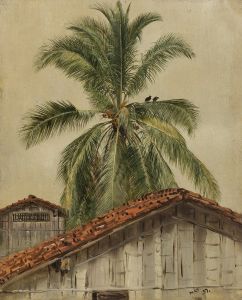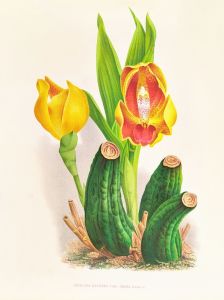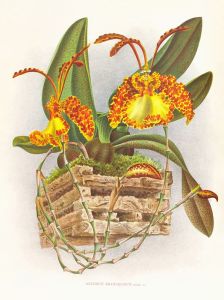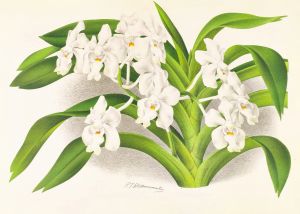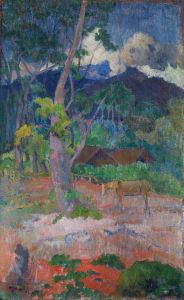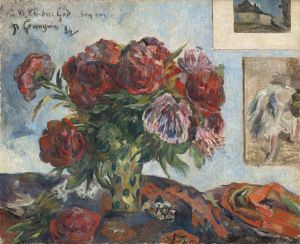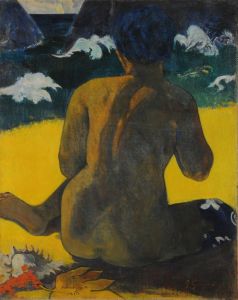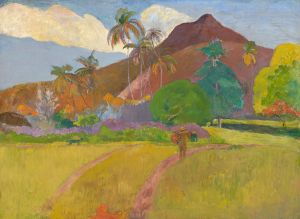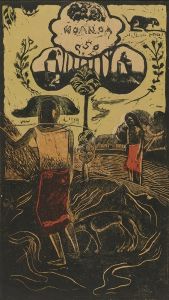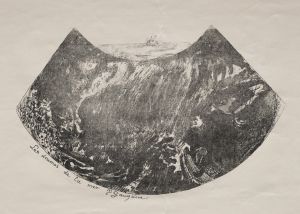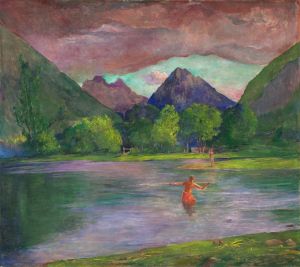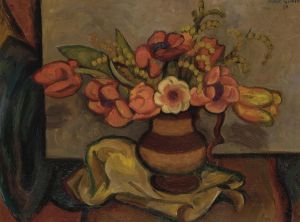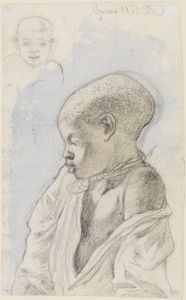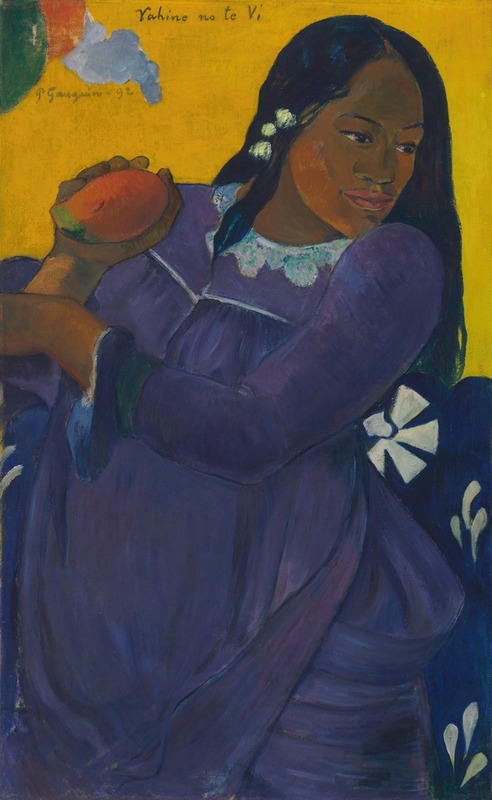
Woman with Mango
A hand-painted replica of Paul Gauguin’s masterpiece Woman with Mango, meticulously crafted by professional artists to capture the true essence of the original. Each piece is created with museum-quality canvas and rare mineral pigments, carefully painted by experienced artists with delicate brushstrokes and rich, layered colors to perfectly recreate the texture of the original artwork. Unlike machine-printed reproductions, this hand-painted version brings the painting to life, infused with the artist’s emotions and skill in every stroke. Whether for personal collection or home decoration, it instantly elevates the artistic atmosphere of any space.
"Woman with Mango" is an oil painting created by the French Post-Impressionist artist Paul Gauguin in 1892. This artwork is one of the many pieces Gauguin produced during his first extended stay in Tahiti, a period that significantly influenced his artistic style and subject matter. Gauguin traveled to Tahiti in 1891, seeking to escape European civilization and immerse himself in what he perceived as a more primitive and pure culture. This journey marked a pivotal moment in his career, as it led to the creation of some of his most renowned works.
The painting depicts a Tahitian woman holding a mango, set against a lush, tropical background. Gauguin's use of vibrant colors and bold forms is characteristic of his style during this period. The composition reflects his fascination with the exotic and the idyllic, themes that permeated much of his work in Tahiti. The woman's serene expression and the simplicity of the setting convey a sense of tranquility and harmony with nature, elements that Gauguin often sought to capture in his depictions of Tahitian life.
Gauguin's time in Tahiti was marked by a desire to explore and document the island's culture and people. He was deeply influenced by the local customs, mythology, and landscapes, which he integrated into his art. "Woman with Mango" exemplifies this integration, as it combines elements of Tahitian culture with Gauguin's unique artistic vision. The painting's subject matter and style reflect his attempt to portray an idealized version of Tahitian life, free from the complexities and constraints of Western society.
The use of color in "Woman with Mango" is particularly noteworthy. Gauguin employed a palette of rich, saturated hues to evoke the vibrancy of the tropical environment. The contrast between the woman's skin tone and the bright yellow of the mango creates a striking visual effect, drawing the viewer's attention to the central figure. This emphasis on color and form is a hallmark of Gauguin's work and demonstrates his departure from the more subdued tones of traditional European painting.
Gauguin's portrayal of Tahitian women has been the subject of much discussion and analysis. While some view his work as a celebration of Tahitian culture, others criticize it for perpetuating stereotypes and exoticizing the subjects. It is important to consider the historical context in which Gauguin created these works, as well as his own intentions and perspectives as an artist.
"Woman with Mango" is housed in the collection of the Honolulu Museum of Art, where it continues to be appreciated for its artistic and cultural significance. The painting is a testament to Gauguin's enduring influence on the art world and his role in shaping the Post-Impressionist movement. Through his exploration of color, form, and subject matter, Gauguin challenged conventional artistic norms and paved the way for future generations of artists.
In summary, "Woman with Mango" is a quintessential example of Paul Gauguin's work during his Tahitian period. It captures the artist's fascination with the exotic and his innovative approach to color and composition. As a piece of art, it offers insight into Gauguin's vision and the broader cultural exchanges that occurred during his time in Tahiti.





